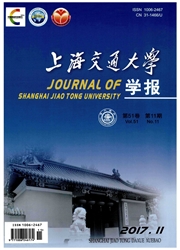

 中文摘要:
中文摘要:
建立了含界面相、纤维和基体的短纤维增强橡胶(SFRR)密封复合材料纵向拉伸模量的预测模型,采用Mori-Tanaka方法得到了SFRR的纵向拉伸模量的预测公式,将其计算结果与试验数据进行对比;同时,探讨了纤维体积分数、界面相的厚度和模量对复合材料纵向拉伸模量的影响.结果表明:纵向拉伸模量预测模型的计算值与试验值较吻合,其最大相对误差为11.2%;SFRR的纵向拉伸模量随着纤维体积分数的增加而增大;界面相模量对SFRR纵向拉伸模量的影响显著,当界面相模量小于基体模量时,SFRR的纵向拉伸模量随着界面相厚度的增加而减小;当界面相模量大于基体模量时,SFRR的纵向模量随着界面相厚度的增加而增大.
 英文摘要:
英文摘要:
A model was established to predict the longitudinal tensile modulus of short-fiber-reinforced rub- ber (SFRR) sealing composites, which incorporated the interphase, the fiber and the matrix. The Mori- Tanaka method was employed to calculate the longitudinal tensile modulus of SFRR and the calculation results were compared with the experimental data. Moreover, the effects of fiber volume fraction, interphase thickness and interphase modulus on the longitudinal tensile modulus were discussed. The results show that calculation results of the longitudinal tensile modulus are in good agreement with the experimental data and the relative error is less than 11.2%. The longitudinal tensile modulus of SFRR increases as the fiher volume fraction increases. The interphase modulus has a significant effect on the longitudinal tensile modulus of SFRR. The longitudinal tensile modulus of SFRR increases as the interphase thickness increases when the interphase modulus is less than the matrix modulus, and decreases when the interphase modulus is larger than the matrix modulus.
 同期刊论文项目
同期刊论文项目
 同项目期刊论文
同项目期刊论文
 期刊信息
期刊信息
